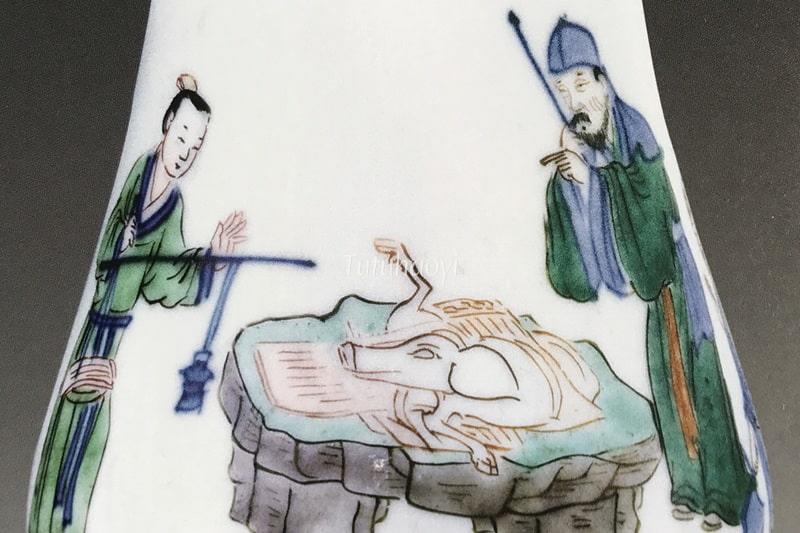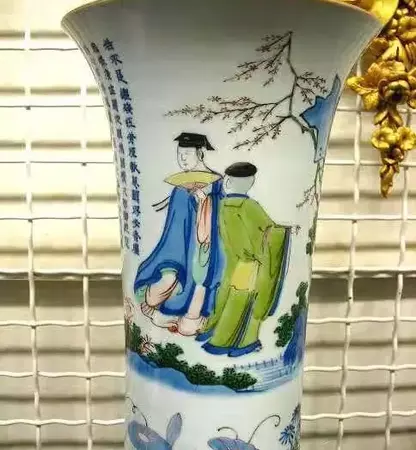The traditional theme of ‘Chen Ping Dividing Meat’(陈平分肉) is often mistakenly referred to as Chen ‘Selling Meat’ or even ‘Picture of Selling Meat’ in Chinese art reference books, which reduces a historically significant theme to a mere genre painting. See how Dr Yibin Ni analyses this with examples.
featured image above: close-up, porcelain covered jar, Kangxi period (1662–1722), Qing dynasty, courtesy of the Palace Museum, Beijing
The traditional theme of ‘Chen Ping Dividing Meat (陈平分肉)’ tells the story of the young Chen Ping (陈平 ?–178 BCE), later a minister of Western Han dynasty, as being an exemplar of fairness in his everyday work. According to Sima Qian’s (司马迁 145 BCE – ?) famous work Historical Records – Prime Minister Chen’s Family (史记 – 陈丞相世家 ), one day, Chen Ping’s village held a ceremony to offer sacrifice to the Earth God. He was entrusted as the arbitrator to divide the meat offerings among attending villagers after the ceremony. As he divided the meat offerings in very even quantities, a village elder remarked that Chen was very impartial, to which he replied ‘Should I one day take rule of the land, I would rule it as impartially as I split the meat offerings.’ Yet, this story scene is often mistakenly referred to as ‘Chen Ping Selling Meat’ or even ‘Picture of Selling Meat’ in Chinese art reference books, which reduces a historically significant theme to a mere genre painting.
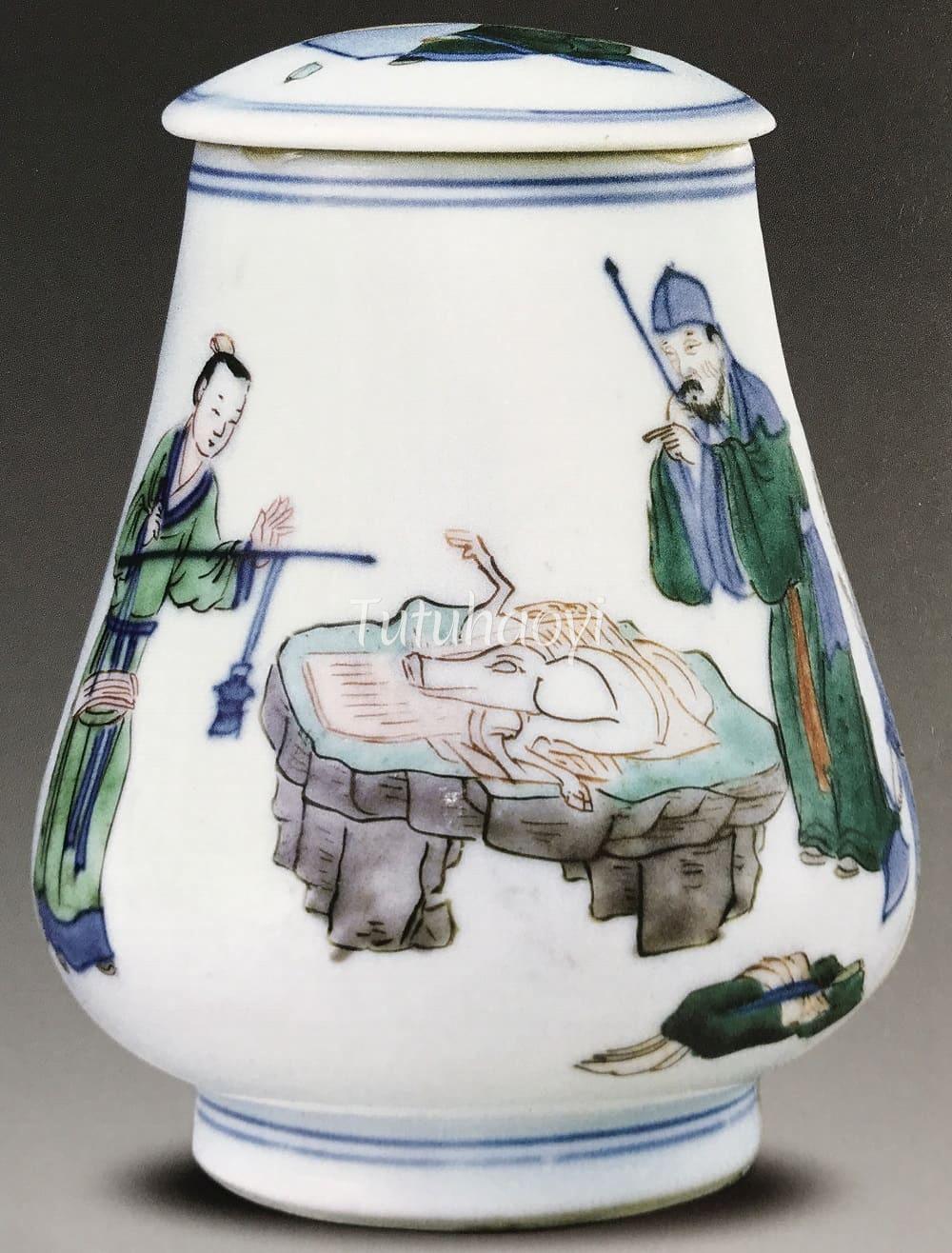
covered jar, Kangxi period (1662–1722), porcelain decorated in underglaze cobalt blue and overglaze enamels, ‘shi jin tang zhi’ mark, H: 12 cm, DM: 4.6 cm, DF: 4.5 cm, Porcelains in Polychrome and Contrasting Colours, The Complete Collection of Treasures of the Palace Museum, Vol. 38, Hong Kong: The Commercial Press, 1999, plate 128, with the explanation of the motif as ‘Chen Ping Selling Meat’
康熙五彩盖罐 世锦堂制款 故宫五彩斗彩 王莉英1999:140 “陈平卖肉”

one of the series of the ‘Antiquarian Playing Cards’, woodblock print, Chen Hongshou (1588–1652), drawn in 1651 and published in 1653, 15 x 8.7 cm, Wanggo H. C. Weng Collection, published in James Cahill, The Distant Mountains: Chinese Painting of the Late Ming Dynasty, 1570–1644, New York: Weatherhill, 1982, p. 258 陈洪绶 博古叶子, with the description of the picture as ‘Chen directing the weighing by a servant while the butcher stands by’
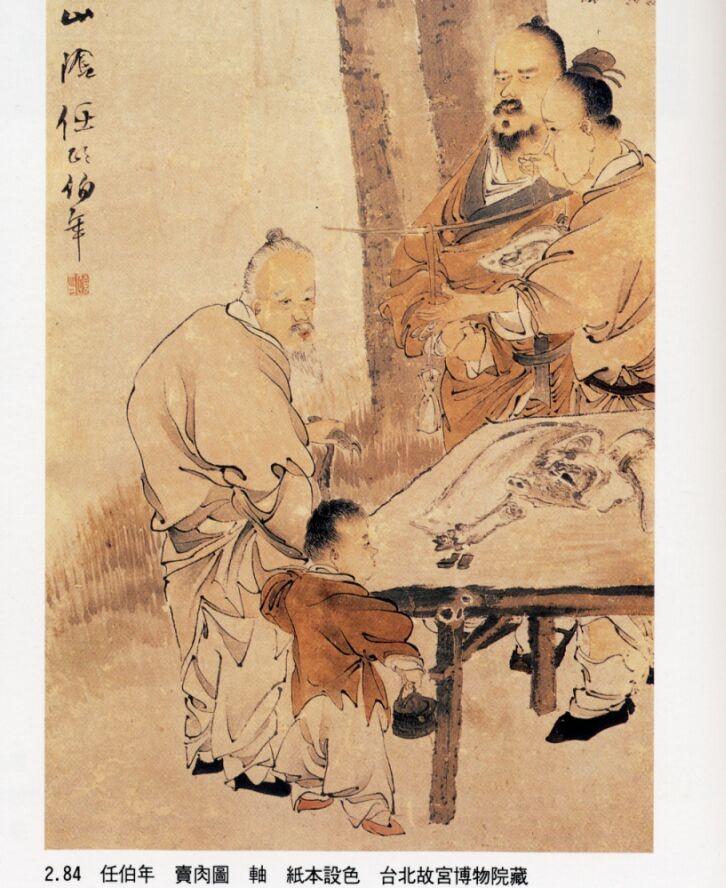
Chen Ping Handing Out Shares of Pork, Ren Bonian (1840–1895), hanging scroll, ink and colour on paper, National Palace Museum, Taipei, published as ‘Picture of Selling Meat’ in Li Chu-tsing and Wan Qingli, Zhongguo xiandai huihua shi: wan qing zhi bu (A History of Modern Chinese Painting: late Qing period), Shanghai: Wenhui chubanshe, 2003, plate 2.62
中国现代绘画史 李铸晋 万青力 上海 文汇出版社 2003 p. 157
The British Museum has a large Kangxi (1662–1722) famille verte dish adorned with a rare detailed version of the inspirational story ‘Chen Ping Dividing Meat’. However, it is described on its website as ‘Figures watching meat being weighed at a butchers stall by a river’.
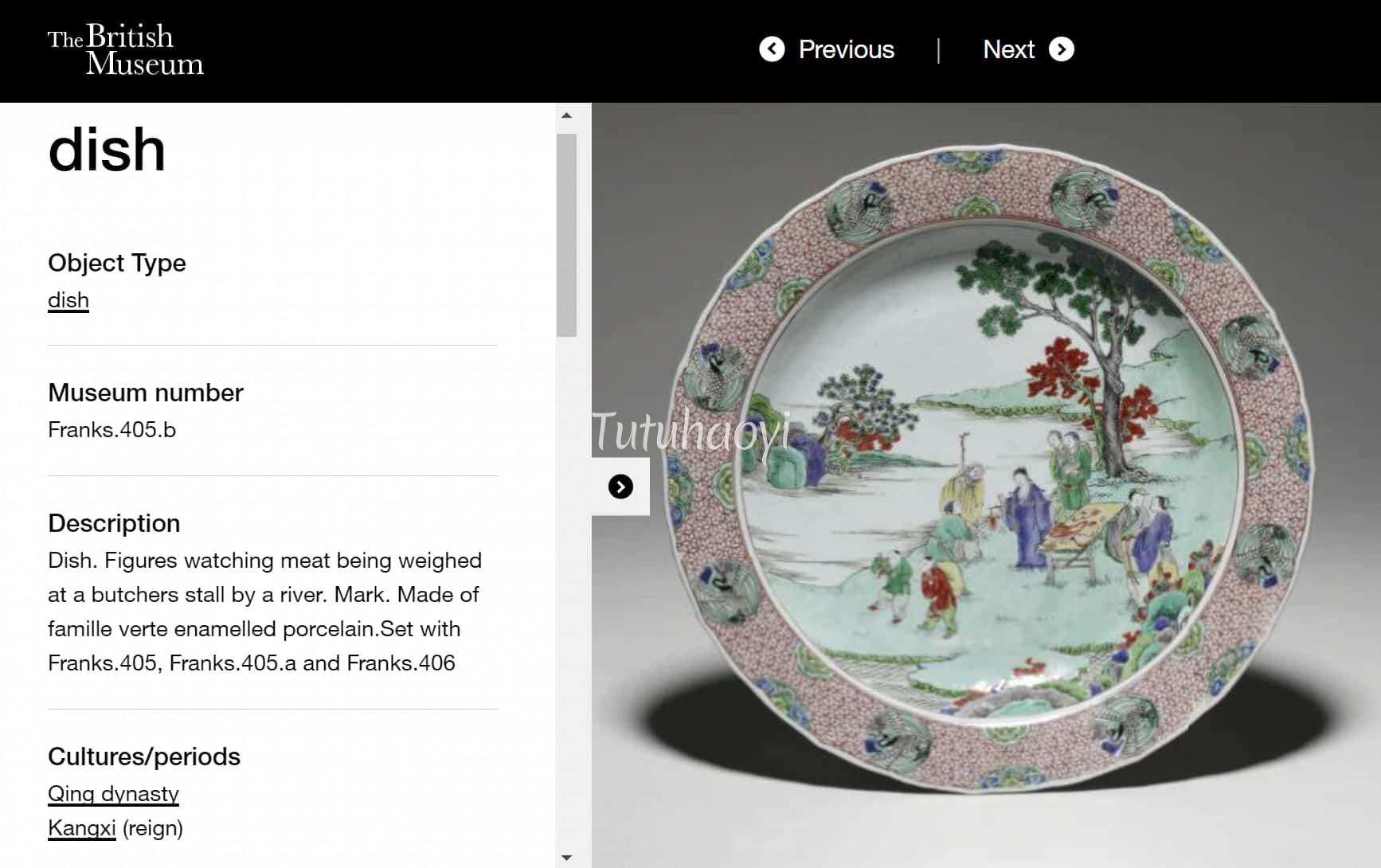
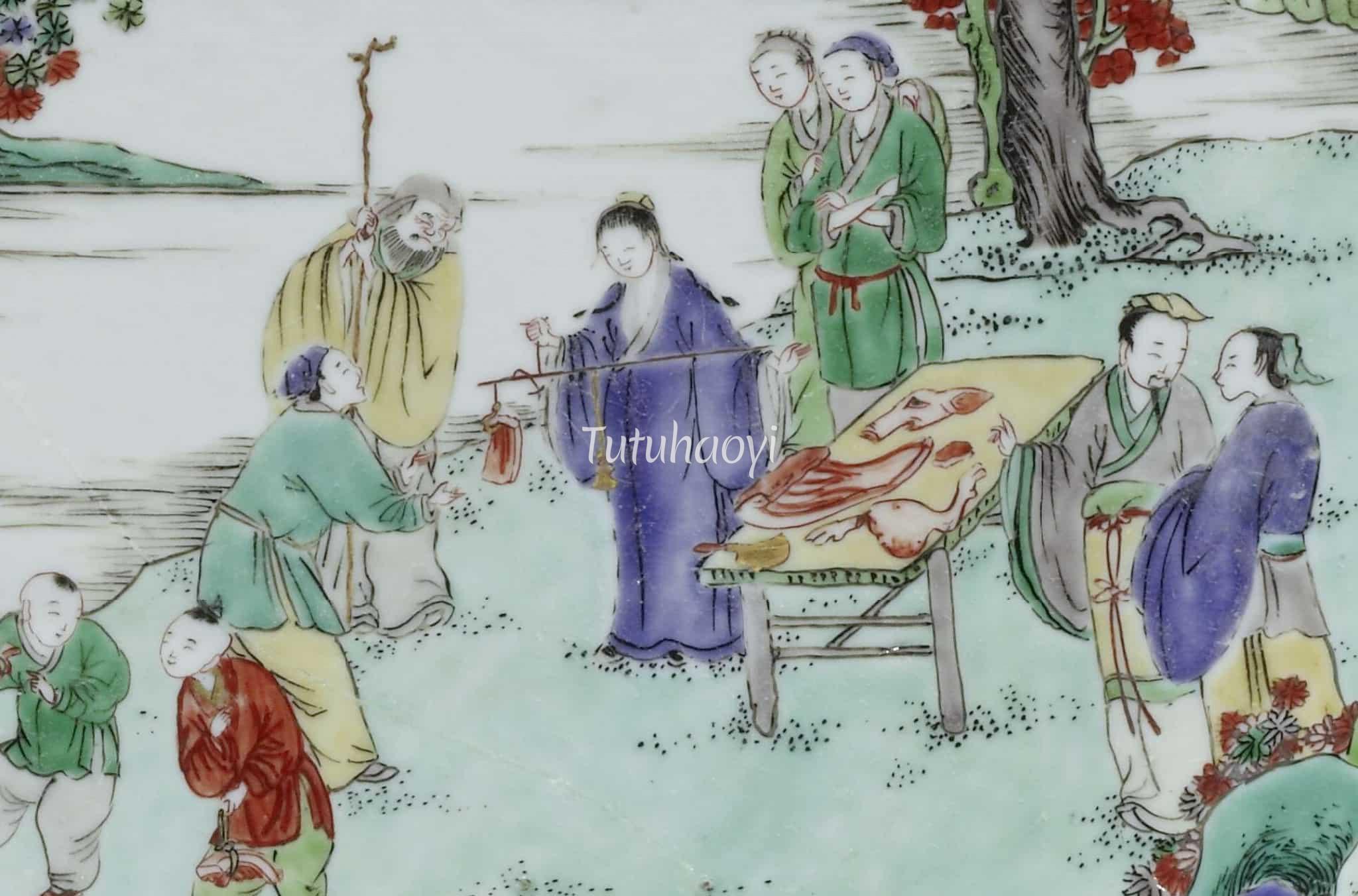

The historical story of ‘Chen Ping dividing meat’ is meant to propagate the idea that accomplished statesmen often have an outstanding track record and emphasises the importance of fairness regarding public affairs. In traditional China, such colourful dishes also serve as attractive bearers of promoted ideology to influence the viewing public, just like biblical scenes on stained glass windows in Western churches.
